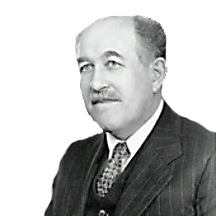George Von Hevesy was born in 1885 in Hungary. He studied at the universities of Budapest and Freiburg and earned a doctorate at the age of 23. In 1911, he moved to Manchester University, where he conducted research on isotopes. After returning to Budapest University, he was appointed professor, but was dismissed shortly thereafter because he was a Jew. He then moved to Denmark and worked in the Niels Bohr Institute and eventually settled in Sweden.
George Von Hevesy was awarded the 1943 Nobel Prize in Chemistry “for his work on the use of isotopes as tracers in the study of chemical processes”.
His paper on radioactive labeling and tracing forms the basis of all radioactive isotopic tracer techniques used in biology, metallurgy, medicine and analytical chemistry. In 1922, he discovered the element Hafnium, which provided one of the first pieces of supporting evidence for the modern theory of atomic structure.
Von Hevesy also developed an analytical technique using accelerated neutrons, which became the most important and precise method available for determining the purity of substances.
George Von Hevesy passed away in 1966.
Developed the radioactive isotopic tracer technique.




